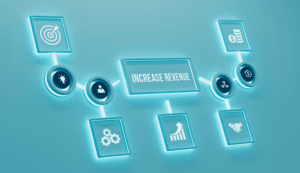Accounts Payable vs Notes Payable: Differences & Examples

This involves establishing a structured system for receiving invoices, verifying their accuracy, obtaining necessary approvals internally, and promptly entering them into your accounting system. Automating this process through digital solutions can save time and reduce human error. This normal balance includes specifying the payment due date, any applicable discounts for early payment, and penalties for late payment. By setting these terms upfront and communicating them clearly to all parties involved, you can avoid misunderstandings or disputes down the line.
Get 2x Faster Payments With Automated Invoicing
- Notes payable are used for significant investments like equipment or property, supporting long-term growth.
- Both are liabilities but they fit into different places in a company’s financial framework and are recorded differently.
- Whereas managing accounts payable demands a series of complex time-consuming tasks.
- The IDC report highlights HighRadius’ integration of machine learning across its AR products, enhancing payment matching, credit management, and cash forecasting capabilities.
- It helps maintain healthy cash flow, avoid pesky late fees, and build strong, lasting relationships with suppliers.
- Businesses use notes payable when they borrow money from a lender like a bank, financial institution, or individual.
With the right tools, businesses can enhance efficiency and gain better control over their financial obligations. Accounts payable (AP) represents short-term liabilities a business owes to suppliers or vendors for goods or services received on credit. These obligations typically arise from routine operating expenses, such as inventory purchases, office supplies, or utility bills.
Cash Management

This liability is typically recorded as a short-term debt and is classified under current liabilities on your balance sheet. In this blog post, we’ll break down the nuances between accounts payable and notes payable, helping you grasp their unique characteristics. We’ll explore topics like payment terms, timelines, impact on working capital, vendor management, invoice processing, and more. In today’s competitive business world, automating accounts payable is a game-changer. The initial costs are outweighed by long-term benefits like streamlined processes, fewer errors, and time saved. Automation allows businesses to focus on growth, managing cash flow better, and building better relationships with suppliers.
How Tech Takes the Stress Out of Vendor Invoice Management
This option is particularly appealing in unstable markets or when businesses seek to optimize their financial setup. When cash reserves allow it, companies should aim to capture these discounts to improve profitability and cash flow management. Here’s a notes payable vs accounts payable side-by-side comparison of notes payable vs. accounts payable for easy reference. Missing payments can trigger late fees, damage credit scores, and even lead to legal action. In cases where notes are secured by assets, default could result in the loss of valuable business property.

Payments

Accounts Payable (AP) is listed as a current liability, reflecting short-term debts due within one year, primarily for goods and services essential for day operations. Notes Payable (NP), on the other hand, can appear as either short-term or long-term liabilities, depending on the repayment terms, and are formal loan agreements for borrowed money. The promissory note issued to the borrower states a specific amount of interest to be paid on the money borrowed.
Monitor key performance indicators (KPIs)
Accounts payable refers to short-term liability accounts incurred for purchases with vendors and suppliers on credit. Notes payable are Bakery Accounting long-term liability accounts incurred through financing by banks and other lending institutions. Many business owners and managers assume accounts payable and notes payable are interchangeable terms, but they are not. Notes payable on the other hand is crucial to business health as well, but for slightly different reasons. The main differences between notes payable vs. accounts payable lie in their formality, interest, and terms. Notes payable is a formal, written agreement made with lenders, whereas accounts payable is generally represented by a supplier invoice.
Appear on the balance sheet
In a nutshell, Accounts Payable is supportive of purchases where bills and invoices are paid usually within days. Notes Payable helps build assets and projects to serve the overall growth of an enterprise. The liberty for an enterprise to not make payments upfront allows the entity to use the working capital to raise scalability through marketing campaigns or upgrading of machinery or equipment. Accounts Payable allows the enterprise to hold outflow of cash for a certain period, encouraging other growth initiatives for the enterprise. By managing vendors effectively, businesses can enhance their overall efficiency while also nurturing long-term partnerships that contribute to their success.
Practical examples and applications.
IDC MarketScape vendor analysis model is designed to provide an overview of the competitive fitness of technology and suppliers in a given market. The Capabilities score measures supplier product, go-to-market and business execution in the short-term. The Strategy score measures alignment of supplier strategies with customer requirements in a 3-5-year timeframe. For your accounts payable, review the payment terms as outlined by the vendor.
What’s the Difference Between Accounts Payable and Notes Payable?
- Details like repayment schedules, interest rates, and any collateral are all part of the loan agreement.
- In journal entries, a debit entry for an account payable signifies an increase in liability or an expense, while a credit entry typically decreases the account.
- These written promises usually include details about the loan amount, interest rate, and due dates for repayment.
- The right accounts payable software can take the pressure off by automating key workflows and improving visibility across your business.
- HighRadius stands out as an IDC MarketScape Leader for AR Automation Software, serving both large and midsized businesses.
- Your financial statements contain a wealth of information that helps you get the lay of the land, plan ahead, and forecast the future.
- Among the various tools available to executives and finance teams, agreements such as notes payable play a role in securing funds to support operations, expansion, and other business needs.
However, pushing it too far can strain supplier relationships and impact supply chain reliability. Timing each entry right helps ensure that there is always some working capital available to your business. Using no-code platforms like Hubler, your business can design custom software to automate invoice approvals with predetermined protocol and matching criteria to streamline this process. A business has a network of suppliers and vendors that it deals with for services and goods.